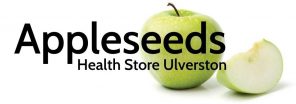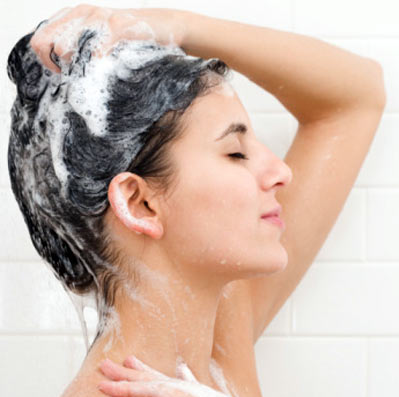By far the most important source of undesirable chemicals are contained in the food we eat. How did we get to this state?
Just after the second world war both this country and a large part of Europe was struggling to feed itself properly, rationing was still with us for some time. At the same time the chemical industry was finding its feet and started inventing new chemicals as fertilizers, herbicides, fungicides, colouring additives and much much more. With Government subsidies to adopt this new world the productivity of your average farm was transformed and suddenly the big agricultural industry was born. The impact on the land, people, wild life and environment was mostly not reviewed as to safety or long term effect. The truth is the food chain is contaminated by a whole raft of questionable products. We are now getting one story after another about the impact of food additives and the casual use by both producers and manufacturers. It seems the impact has to be proved beyond doubt before somebody takes action. One of many being children suffering from Lindane poison in China ( and elsewhere). Lindane is an organochlorine insecticide that is toxic and still in relatively widespread use in developed nations as well as in the third world. Many other organochlorines which over the years have been linked to major health and environmental problems have been banned but others are still used quite extensively particularly in some developing countries.
If you were to take a chemical analysis of your body it would be laced with dozens of undesirable chemicals the effects of which are not understood, even worse the cocktail effect is just unknown. The usual line offered is that such chemical content is within safe limits, which may be true but the fact is we just don’t know. Perhaps the message is getting home. The EU is adding more than 800 chemicals to the dangerous substances Directive (DSD)—including nearly 290 substances that have been identified as causing cancer, genetic mutation, or as having an effect on reproduction.
I guess the answer is “read the label”, but despite the improvements to label content the average person needs a degree in Chemistry to decipher the lists and some of the statements can be seriously misleading. e.g. There is no legal definition for “natural” which is why you see it everywhere.
As an example of the issue I have briefly looked at the Cosmetics Industry:
There is a large difference between a natural, organic and a certified organic skin care product. Unfortunately a “natural” product means very little these days. In the UK the word ‘natural’ can be applied to any product as long as at least 1% of the ingredients are obtained from nature. An “organic” product may be a combination of organic and non-organic ingredients. It is easy to call a product natural or even organic and then add synthetic ingredients. Whereas a \”CERTIFIED ORGANIC SKIN CARE PRODUCT“ is guaranteed to contain a minimum of 95-100% of certified ingredients and no harmful synthetic chemicals.
To help you be a little more inquisitive here are some harmful chemicals to look out for:
| Formaldehyde | Preservative. Found in nail polish, nail hardeners and other cosmetics. Commonly associated with adverse skin reactions. Also DMDM Hydantoin used as a anti-bacterial. Found to cause lung cancer and damage DNA. |
| Imidazolidinyl and Diazolidinyl Urea | Widely used preservative. Commonly associated with adverse skin reactions. Often called Germall II or Germall 115. Both these chemicals release formaldehyde, which can be toxic |
| Parfum / Fragrance | Synthetic fragrances used in cosmetics can consist of many ingredients, and these ingredients do not have to be listed separately from the other ingredients. Look for products that list \”natural fragrance\” or whose perfume comes from essential oils. |
| Methyl, Butyl, Ethyl and Propyl Paraben | Preservatives. Widely used. Associated with skin irritation. Some possibility that it may be a xenoestrogen Can be absorbed through the skin and known to be toxic |
| Isopropyl alcohol | Anti-bacterial agent obtained from petroleum (sometimes used in anti-freeze). |
| Methylisothiazolinone Paraffin | Preservative. Used in cold creams, hair removers, eyebrow pencils and other cosmetics. Derived from petroleum or coal. Associated with allergic reactions and irritation. |
| Propylene Glycol | Moisture carrying agent used in cosmetics. Usually derived from petroleum (industrial anti-freeze), but can be derived from vegetable glycerin mixed with grain alcohols a safe alternative. Beware of PEG (polyethylene glycol) and PPG (polypropylene glycol) which are related synthetics. |
| Sodium Lauryl / Laureth Sulphate
SLS/SLES
|
A cheap harsh detergent used in shampoos for cleaning and foam building properties. A detergent that can have a drying effect on the skin that can cause irritation. May cause potential carcinogenic nitrates and dioxins to enter the blood stream. |
| Benzoic Acid | A preservative and solvent. Contains carcinogenic enzene rings and toluene. Irritant to eyes and respiratory tract. |
| Colourants Cl 17200. Cl 15510, Cl 60730, C1 42053 | Just four of the hundreds of synthetic colourants whose certification is likely unknown. Highly dubious. |
| Cocoamide DEA, TEA, MEA | Makes shampoo lather in a way that would be otherwise impossible. Causes cancer in lab animals. Can react with SLS/SLES to produce carcinogen nitrosamine |
There are many alternatives to the synthetic chemicals used in beauty products. The best option is to choose a natural cosmetic, these are plant-derived and do not allow synthetic dyes, colorants, fragrances and other synthetic chemicals.
Whilst it would be desirable to have “no preservatives” in practice this is in most cases not possible. Products would not last even the route from supplier to store to you. The decaying process is completely natural and must be understood as such. Natural preservatives are available & are frequently used – however putting a natural preservative in a synthetic product is a complete waste of time and misleading to the consumer. Look out for this double standard.
Whatever you use cosmetics for – skin care, repair, cover up, hair styling, deodorant etc. it seems completely illogical not to consider the product contents and select carefully. The use of products like aluminium for example in antiperspirants, which block the sweat glands, cannot be how the body is expected to function. By all means use a deodorant to stay fresh – there is a significant difference.
In addition you may like to consider how products are produced. Testing on animals is still the normal method to safety testing. How does this demonstrate safety to our species? Testing a product to toxic dose and then advertising as safe at a lower dose is hardly the same thing.
Our message to you — To last longer – go natural!!

